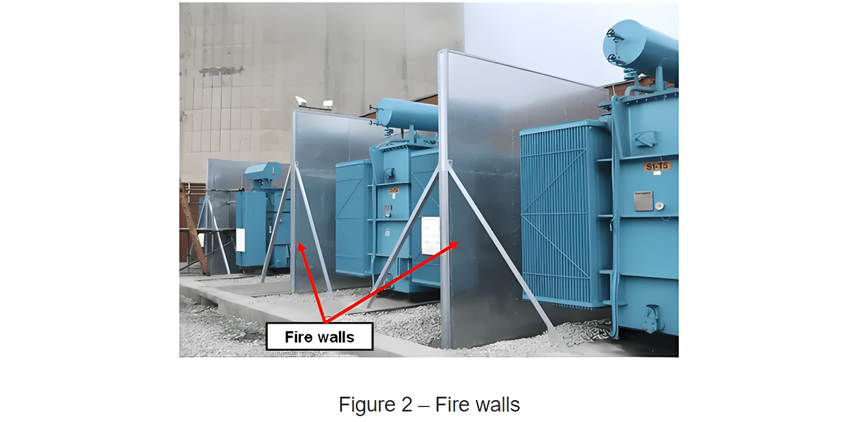Transformer Fire Protection Systems
This system is activated by flame detectors if the transformer is installed outdoors, or by smoke detectors if indoors.
Types of Transformer Fire Protection Systems
Transformer fire protection systems can be categorized into:
Water-Based and Mist Systems
- Components: Fire pumps, fixed water spray systems/nozzles, valves, valve components, and piping.
- Function: Rapidly suppress fires by dousing the transformer with water, leveraging high-pressure sprays or fine mists to cool surfaces and smother flames.
Fire Detection Systems
- Components: Fire detectors (thermal, smoke, or flame sensors), control panels, and cabling.
- Function: Detect fire hazards early and trigger suppression systems or alarms to minimize response time.
Mitigation Considerations
Fire suppression may be less critical if:
- The transformer is remotely located from structures and other equipment.
- Burning oil can be contained effectively (e.g., via fire-resistant barriers or drainage systems).
However, in most cases, protecting plant structures, adjacent equipment, and personnel necessitates fire suppression measures.
Alternative Solutions
Using less-flammable insulating fluids (e.g., high flashpoint oils or synthetic esters) can reduce fire risks and may eliminate the need for active suppression systems, making them a viable alternative in some installations.

Requirements for Transformer Fire Protection
The following are the fundamental principles for transformer fire protection:
New Facilities with Mineral-Oil-Filled Transformers
- New installations featuring large mineral-oil-filled transformers located near plant structures or other equipment must incorporate active fire suppression systems to safeguard the structure, adjacent equipment, and the environment.
- Additionally, they require properly designed containment systems (e.g., oil retention dikes) to prevent environmental contamination from spilled oil.
- For new facilities—and where practical in existing plants—mineral-oil-filled transformers should be sited away from buildings, other equipment, and waterways to minimize fire and environmental risks. In such cases, active fire suppression may be unnecessary if separation distances and other risk mitigation measures are sufficient.
Existing Facilities
- Functional fire suppression systems in operation should continue to protect plant structures and equipment but must be periodically reviewed for adequacy and compliance with current codes and standards.
- Inactive or non-functional fire suppression systems must be assessed for compliance with modern standards and restored to operational status where required.
- Existing facilities without fire suppression systems must install them where necessary to protect critical structures or equipment, as determined by risk assessments.
- Transformers require periodic condition assessments in addition to routine inspections, testing, and maintenance. Units with low condition indices should be prioritized for rehabilitation or replacement to reduce failure risks.
- Fire walls or barriers should be installed between adjacent transformers, between transformers and plant structures, between single-phase units, or between transformers and other equipment where feasible. These barriers limit fire and explosion spread, minimizing collateral damage.
- Fire suppression systems must be regularly operated, maintained, and tested to ensure reliability during emergencies.
- Oil containment and oil-water separation structures (e.g., spill berms, interceptor tanks) must comply with all relevant environmental laws, regulations, and industry standards to prevent pollution.
- Access to transformer areas must be restricted to authorized personnel only. Measures should be taken to physically limit public proximity to transformers, reducing the risk of injury or unauthorized interference.
- All fire protection and containment measures must align with applicable environmental laws to prevent regulatory non-compliance and ecological harm.
By adhering to these principles, facilities can effectively mitigate fire risks, protect infrastructure, safeguard personnel, and minimize environmental impact from transformer incidents.